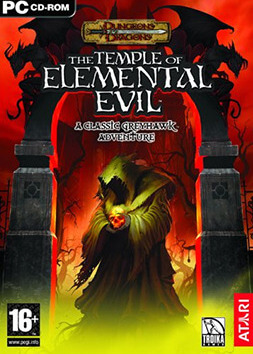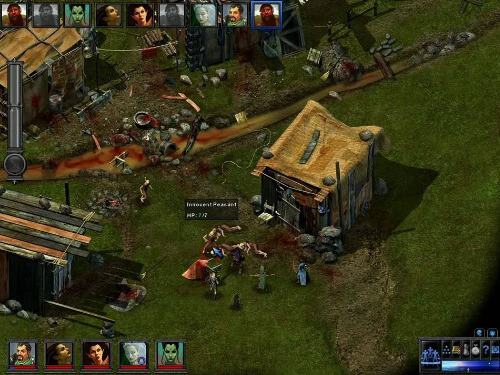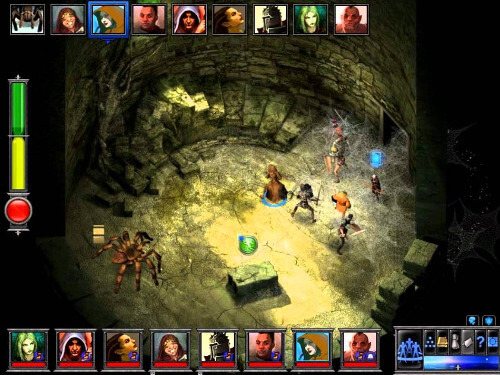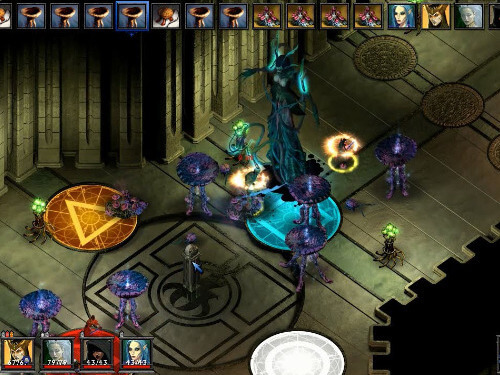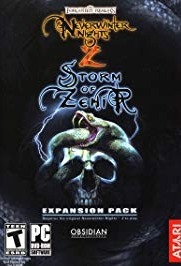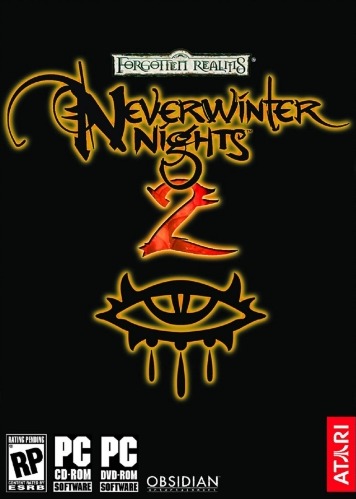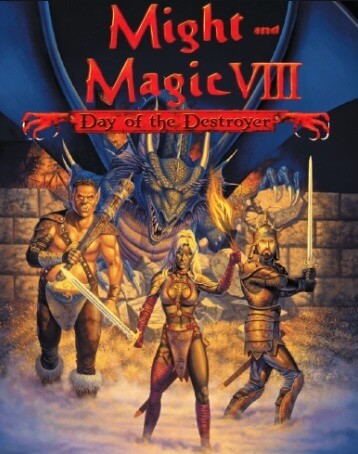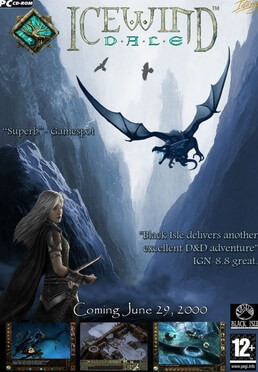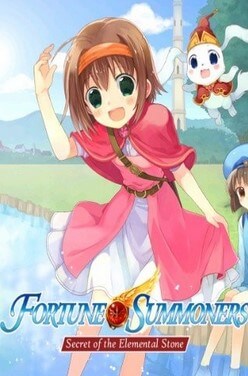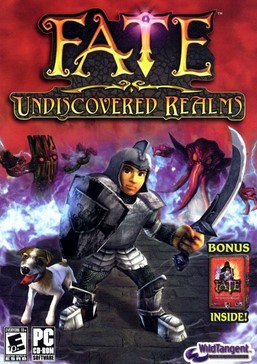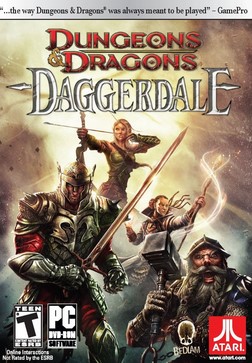The characters are controlled via radial menus. After selecting a character, the player right clicks to open a circular menu. From there, hovering over wedges brings out more options, such as specific spells, actions, or inventory items. The main radial menu, which encircles a picture of the character selected, has up to six sections, the number being based on class abilities. Specific actions are color-coded based on the type of action they are.
Characters can use their skills throughout the game by selecting them on the radial menu. If a player wanted to pick another character's pocket, he or she would select a character with the Sleight of Hand skill, left-click on the skill from the radial menu, and left click on the victim. Dialog skills, such as Intimidate and Gather Information, appear as options in dialog with an icon denoting the skill being used. Skills are increased every level at a rate derived from the character's class and Intelligence.
Combat is turn-based, with characters going individually based on their initiative. Each character can make five types of actions: free, no, full-round, move, and standard. Characters can take a move action and a standard action each turn. Full-round actions count as a use of both actions. Free actions take a negligible amount of time to perform, so they count as neither actions. No actions also count for neither actions, but they require special circumstances in order to be performed. Characters can choose special attacks to perform or spells to cast, and they can also choose to attack or cast in specific ways. Defensive casting and fighting, dealing non-lethal damage, tripping an opponent, and coup de graces are examples of particular actions in combat. Characters have a set yet semi-random number of hit points based on their level, class, and Constitution score. Upon being reduced to zero hit points, a character is staggered, and a full round action will cost him or her one hit point. A creature with hit points between −1 and −9 is unconscious, and loses one hit point a round. The character has a 10% chance of stabilizing, which will stop the loss of hit points but will keep the character unconscious. Other characters can stop this loss of life through a successful heal check. If a character or creature reaches −10 hit points, it dies.
Although most of the main rules from 3.5 edition of Dungeons & Dragons are implemented, there are several exceptions. Some of them, such as applying a bonus to AC from the Dodge feat, are simplified to streamline play. Others, such as not letting prone characters attack, are implemented to reduce the number of required animations. The structure of the engine is also utilized, allowing encumbered characters to move at 3/4 their maximum rate, even if the resulting speed is not a whole number. Certain abilities, including Barbarian Rage, are modified to better flow with the game. A hybridization of some rules also occurred; the spell Doom is modified to reflect the first printing of the Player's Handbook, and weapon sizes are a blend of 3 and 3.5 editions. The game also has two difficulty levels, Normal and Ironman, with the latter intended to more closely mimic the paper-and-pencil game.
Plot
Thirteen years before the start of the game, Hommlet was a peaceful town. Due to low taxes and safe roads, the area became prosperous, and the village flourished. This prosperity drew the attention of evil forces, who began slowly trickling into the area. It is not known where these forces came from, but the Dyvers of Nyr Dyv and the inhabitants of the forestlands of the Wild Coast were the chief suspects. As the presence of bandits, kobolds, and goblins increased, a local militia led by Waldgraf of Ostverk was raised to defend Hommlet. This only served to check the evil forces, however.
Six miles from Hommlet, a group of hovels formed a center for the evil activity. The locals ignored this threat since it was in the marshes, and Nulb began growing. A small chapel built to an evil god grew into a stone structure as the evil forces pillaged and robbed the lands around Hommlet. For three years the Temple of Elemental Evil served as a center for the swarms of vile creatures who plagued Hommlet. As the evil grew in power, the land around the Temple suffered from pestilence, famine, and a lack of commerce.
The leaders of the Temple grew too power-hungry, and they were defeated in the Battle of Emridy Meadows after challenging the kingdoms of the north. The evil forces were slaughtered, and their mighty Temple was destroyed and sealed with magic and blessings. In the years that followed, Hommlet became a destination for adventurers, who brought wealth to the city and returned the area to its peaceful origins. Eventually, adventurers stopped coming, and the village went back to life as usual. A year before the start of the game, however, bandits once again began trickling into the region, and the villagers appealed to the Lord the Viscount of Verbobonc for aid. He responded by providing funds for Burne and Rufus, two well-known adventurers from the area, to build a keep just outside Hommlet.
